
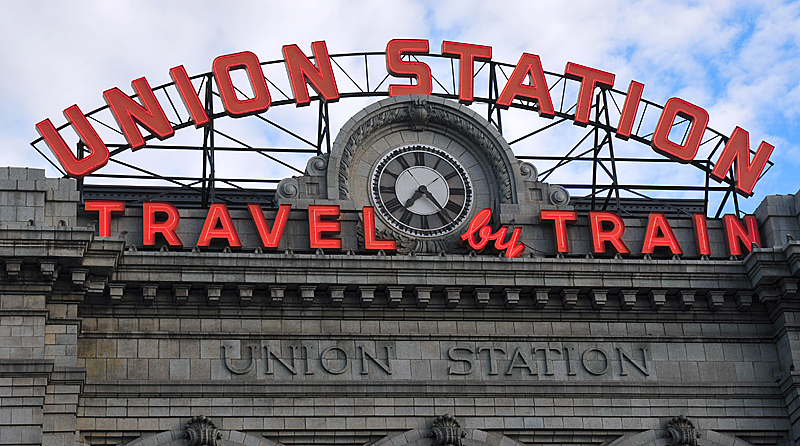





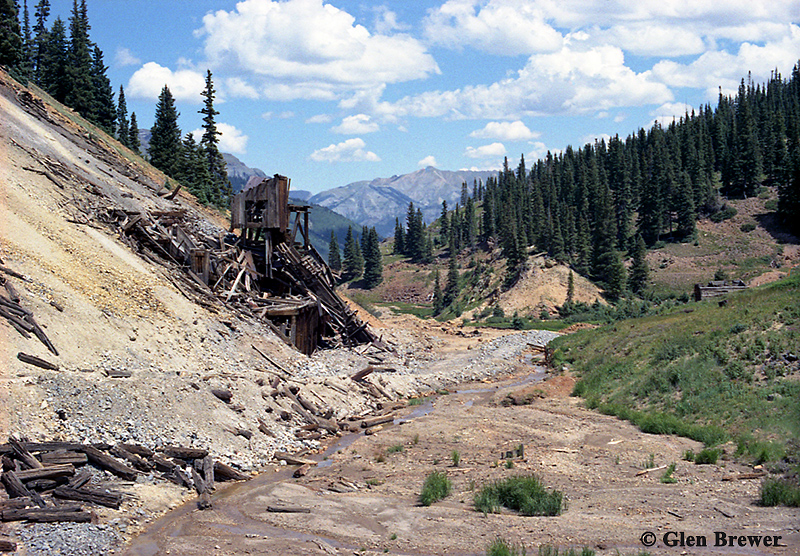
Walking north through Red Mountain Town site (10910 feet). It is hard to imagine that at the peak, there were as many as 10,000 inhabitants living here. Winters were severe at this elevation, and most of the town burned in 1892. Remains of the National Belle mine are on "The Nob" to the left, most town buildings were on the right and the Silverton Railroad station was just ahead.
In the railway world, there are legendary places: some are sites of great events; many are sites of great engineering accomplishments, incredible scenery or both. In some of these places, the rails still serve, but many have not seen a train in years. Colorado has more than its share of legendary places. One of them is Corkscrew Gulch turntable on the long ago abandoned Silverton Railroad.
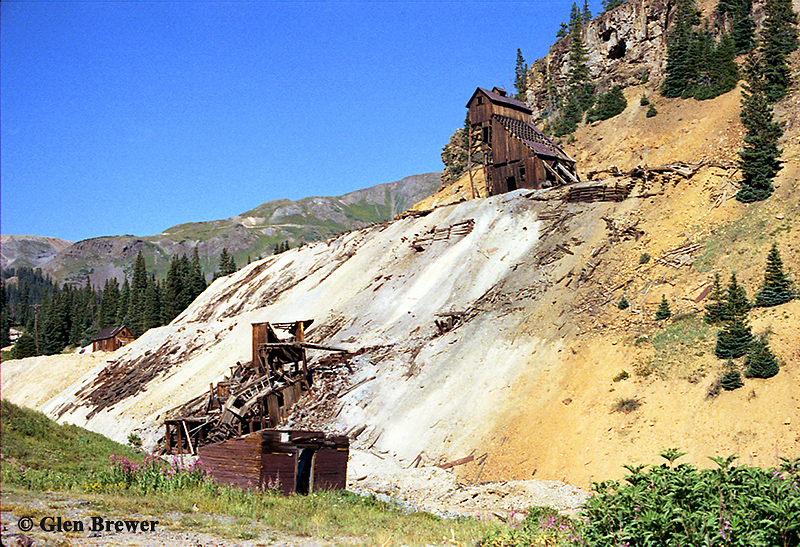
Looking back south from near the station site. The National Belle is on the right; the town jail is the small building at the bottom left.
Every year in summer months, trainloads of tourists arrive in tiny Silverton, Colorado. Narrow gauge steam trains have served Silverton continuously, if not always regularly, since 1882. Originally the Silverton Branch of the Denver & Rio Grande, over the years the railway was renamed the Denver & Rio Grande Western then the Durango & Silverton Narrow Gauge Railroad, but service has continued. The D&RG may have ended here, but tracks did not. Three additional railroads extended north looking on a railroad map like a three pronged pitchfork.
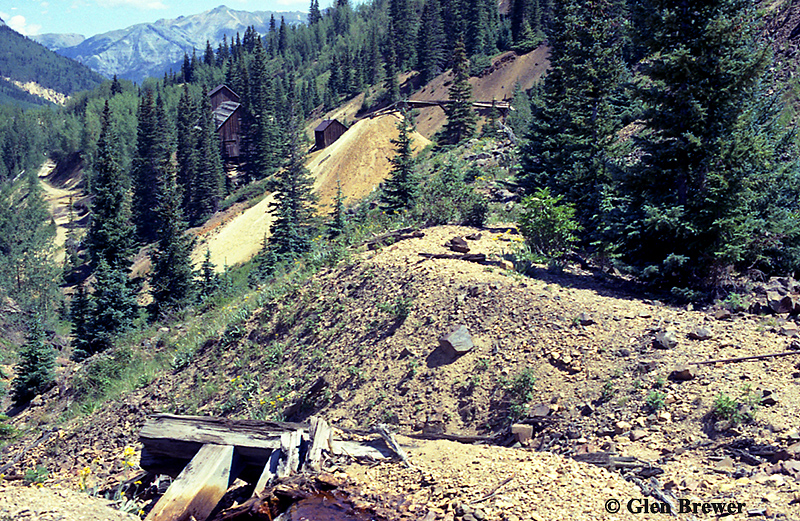
There were several mines and several mine spurs along the west slope of Red Mountain Number 2. A railroad bridge bent is in the foreground, and the Robinson mine powerhouse and shaft-house is in the background.
All three of these smaller railways were built or came under control of the "Pathfinder of the San Juans," the indomitable Otto Mears (1840 - 1931). Mears had a long history of building and operating toll roads. Some he sold to the rapidly advancing D&RG, but he used his toll road to Ouray to build his own first railroad, the remarkable Silverton Railroad - the western prong of the pitchfork.
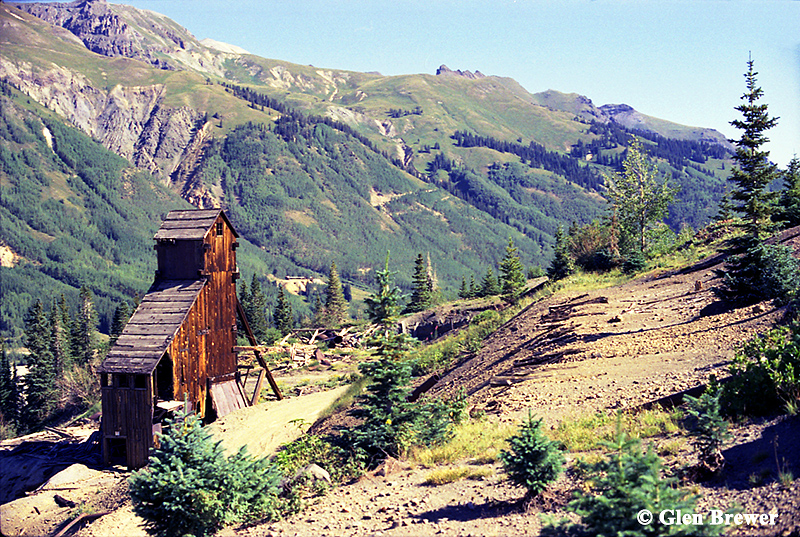
The Yankee Gril shaft-house.
In the words of Chief Engineer C. W. Gibbs, "The Silverton railroad is a short line but 17.5 miles long, and has the reputation of being the steepest (5 per cent grade), crookedest (30 degree curves) and the best paying road in Colorado; and it is owned by one man, Otto Mears. It also has a turn-table on its main track."
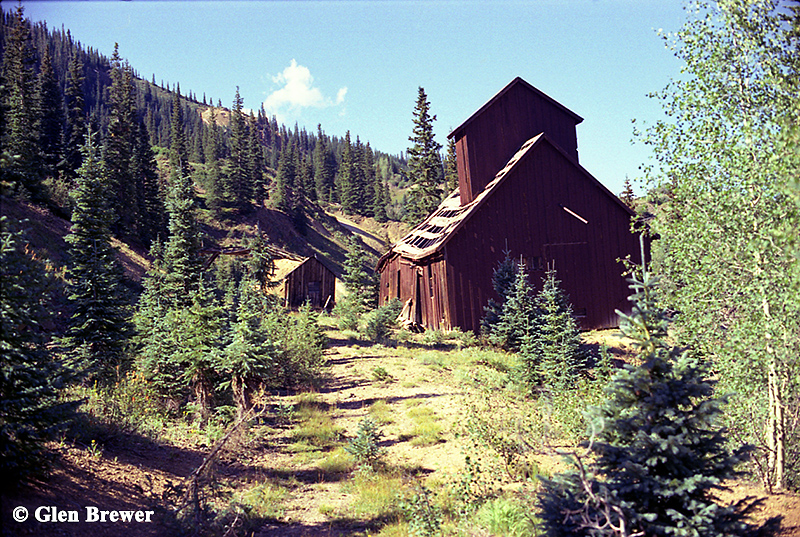
Robison powerhouse/shaft-house.
Starting in 1887, the Silverton Railroad built up Mineral Creek and over Red Mountain Pass (elevation 11,113 feet) to reach Red Mountain Town and the rich silver mining district nearby. After reversing directions at a wye in Red Mountain Town (where the depot was located in the middle of the wye due to space limitations), tracks continued north through the Red Mountain mining district toward the mills and communities of Ironton and Albany. A second switchback was located on the mountainside at Corkscrew Gulch (elevation of 10,355 feet). Following the first winter of operation, Engineer Gibbs devised a unique solution for difficult operating problems - a turntable on the tail of the switchback to avoid running with the engine on the uphill side or having to operate in reverse. Approach tracks and turntable were covered with snow sheds.
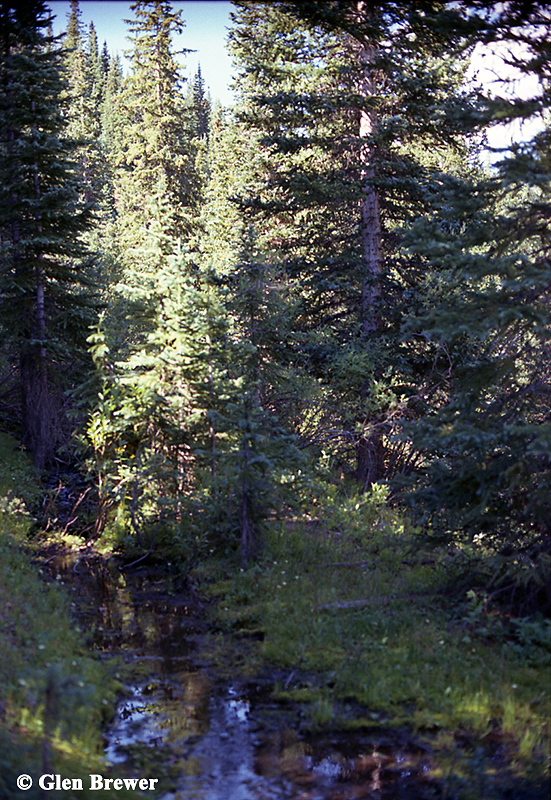
I had to walk around some significant puddles on the trackbed.
The new railroad was a huge success. Business was so good that Mears issued passes made from silver, silver filigree and gold filigree. The railway was on the D&RG's "Around the Circle" tours. The Ouray and Ironton Electric Railway, Light and Power Company was incorporated to continue the route to Ouray. This line would have required a nearly steady 7 percent grade, tight curves, a tunnel, several loops and a complete spiral to reach Ouray.
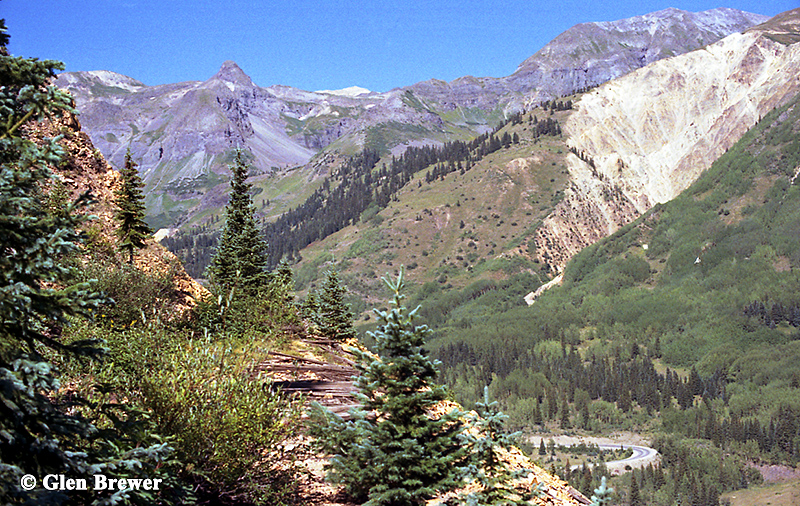
Some of the right-of-way seemed a bit precarious.
But success was short lived. It ended quickly and permanently when the Sherman Silver Purchase Act of 1890, which artificially inflated the price of silver, was repealed in early 1893. Mines closed, railroads declared bankruptcy; financial panic and depression spread throughout Colorado and the United States. It was the worst recession to hit the United States until 1929.
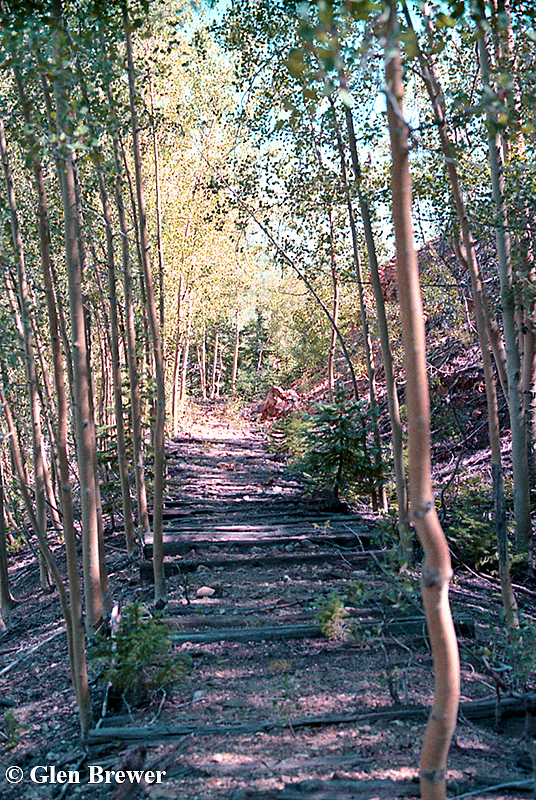
At other places, the aspens had taken over.
The reorganized Silverton Railway struggled on for a while. In 1919, Mears was still president, but train miles were down to 716, ton miles were 11,637, total operating revenue was $4,186 and operating expenses and taxes were $4,919 resulting in an operating deficit of $733. The trend was downward; rails were removed in 1926.
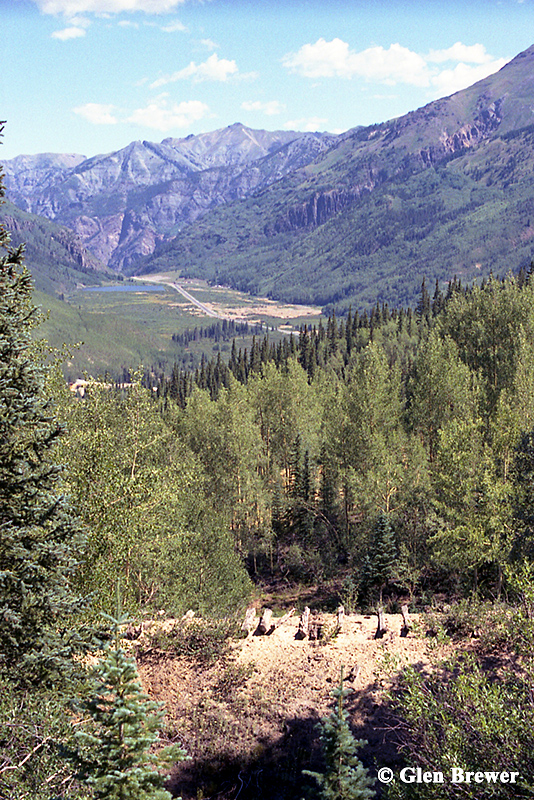
Approching the switchback switch. Looking toward Ironton with the lower grade visible below.
In 1972, I wasn't sure how to find the turntable which I knew to still exist. Simple, I thought, I would start at Red Mountain Town and walk the grade.
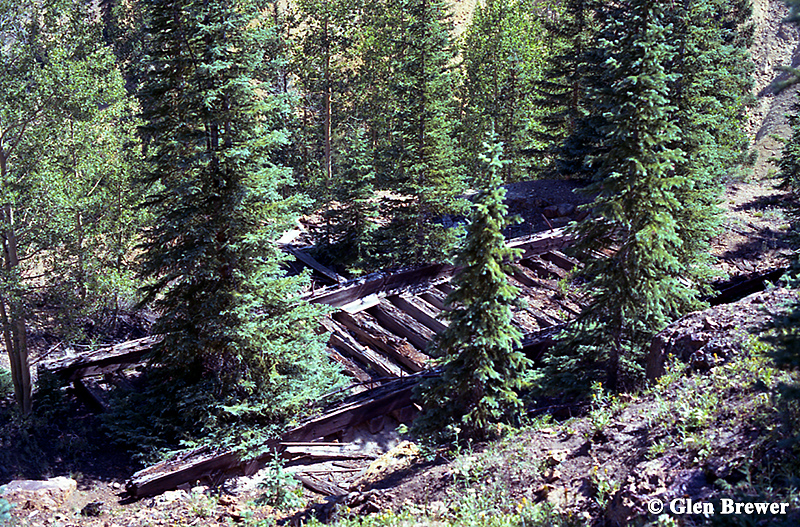
Corkscrew Gulch Turntable complete with trees.
Just out of Red Mountain Town it was sometimes hard to find the main line, and in the mining district it was hard to determine which grades were mining spurs and which the main line. On up the tracks hiking became easier but with a few places where vegetation, standing water and washouts blocked the route. (On a second trip earlier in the season, huge snow slides blocked the track bed.) Still, it was a very pleasant hike of a little over two miles (more than 10 percent of the whole railroad) before I came upon the turntable itself. The snowsheds were long gone -- little remained of them but a few flat nails. Trees grew up through the turntable, but it was easily identifiable.
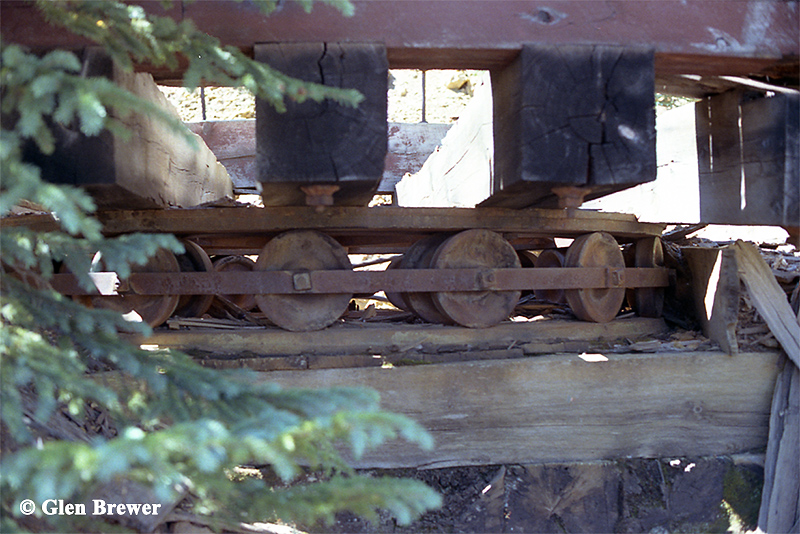
Turntable center bearing.
It was a delightful hike through beautiful scenery steeped in the history of a legendary narrow gauge railway.
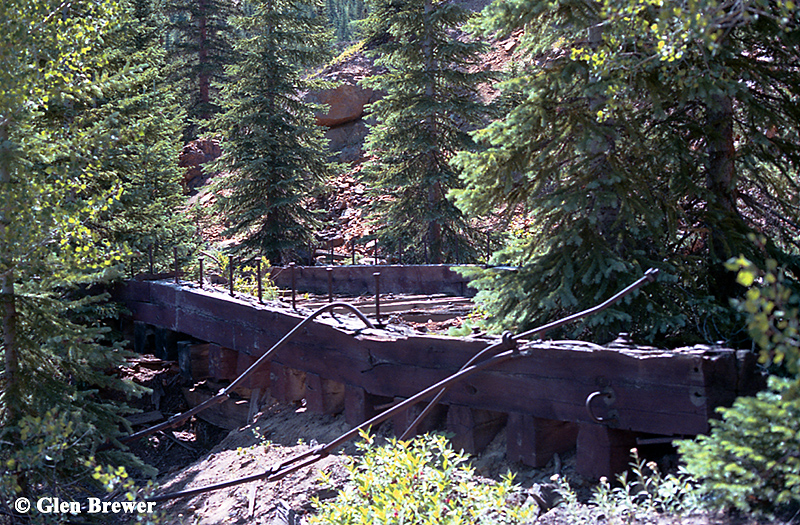
One last shot of the turntable.
Red Mountain project web site: Red Mountain Project
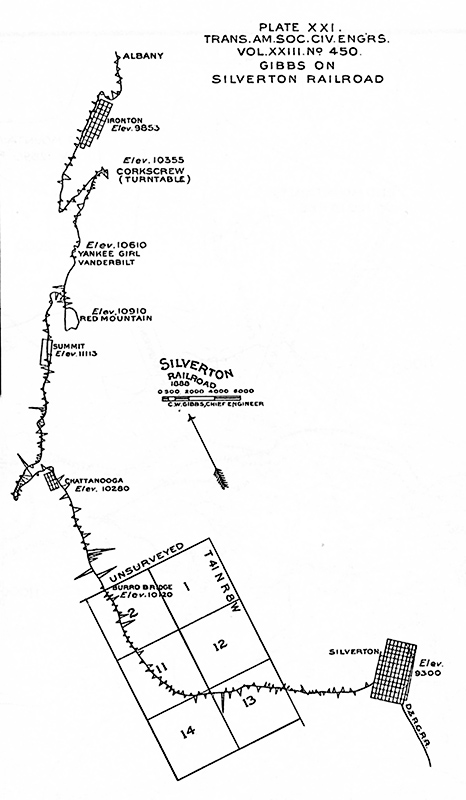
Map of the Silverton Railroad from Gibbs' article in The American Society of Civil Engineers Bulletin #450, Vol. XXIII -- September, 1890.
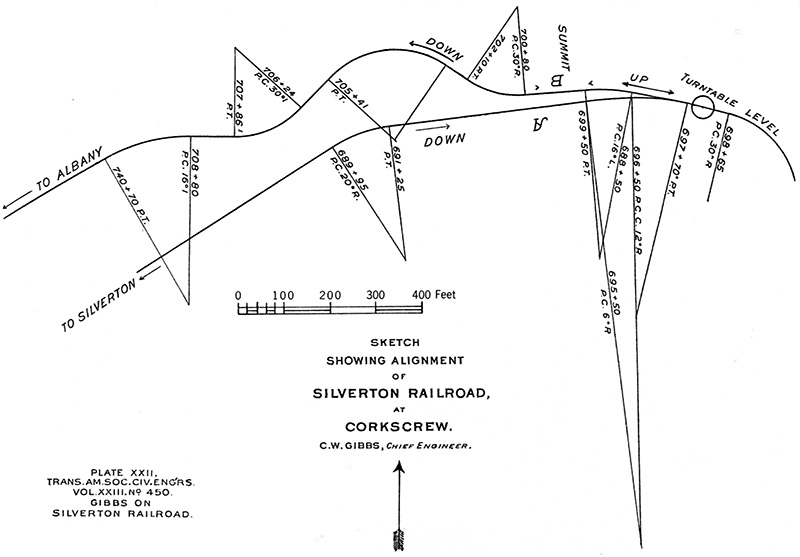
Map of the turntable area from the same source as above.
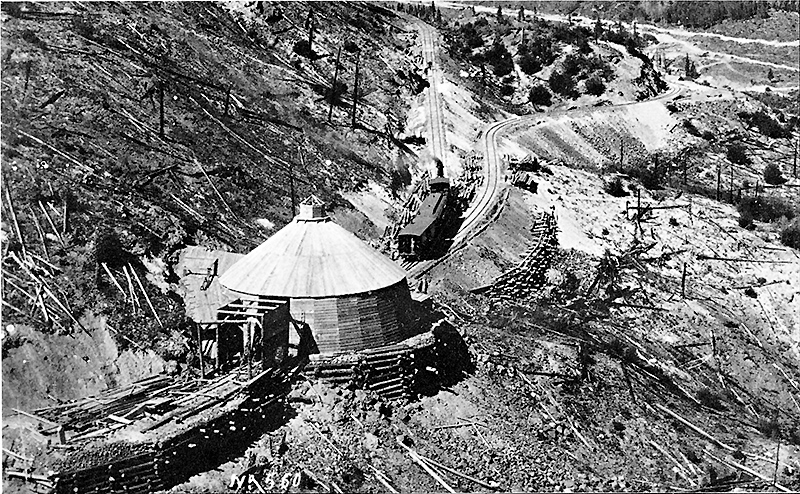
"A passenger train, having passed through the turntable, is going upgrade to Guston. The materials along the track are probably for construction of the snow sheds." W. J. Carpenter photo, courtesy of the Colorado Railroad Museum.
Three years later I made the hike a second time, this time with a friend.
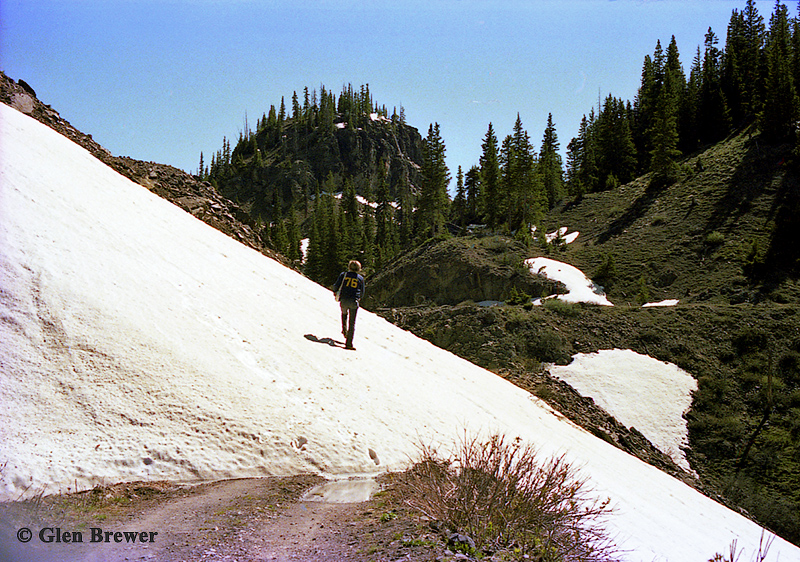
A little snow remined at the end of June.
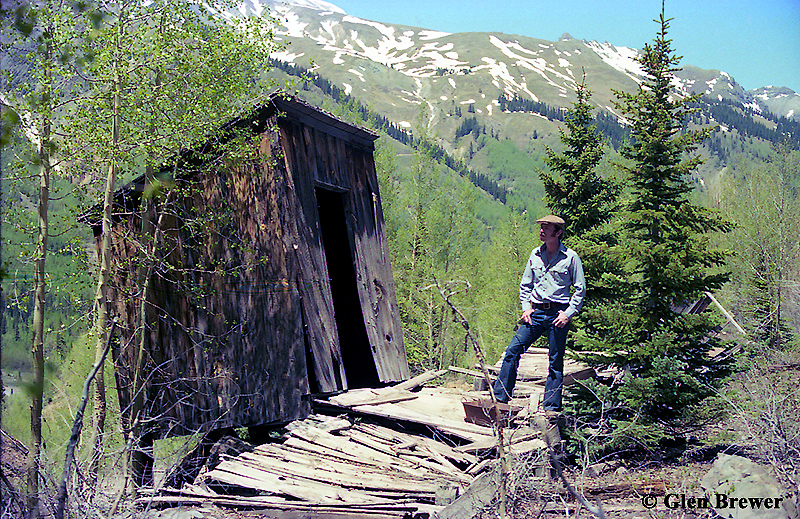
Guston Station.
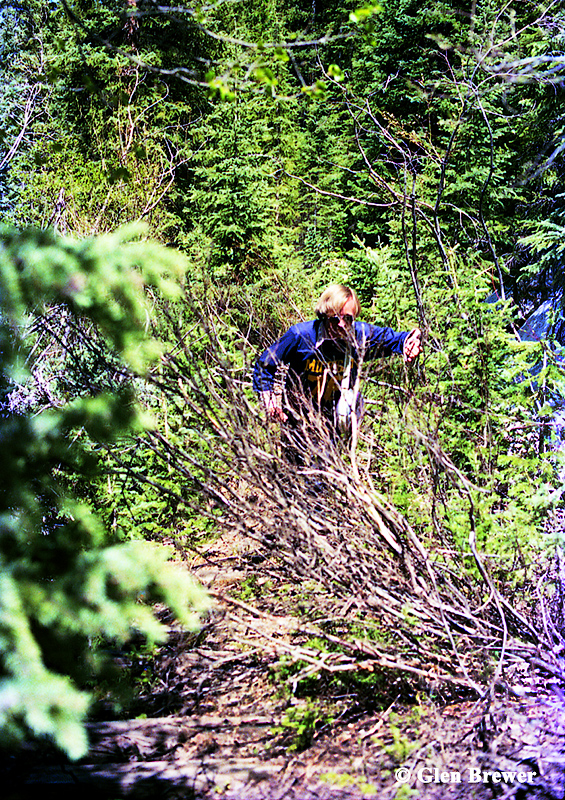
Bushwacking.
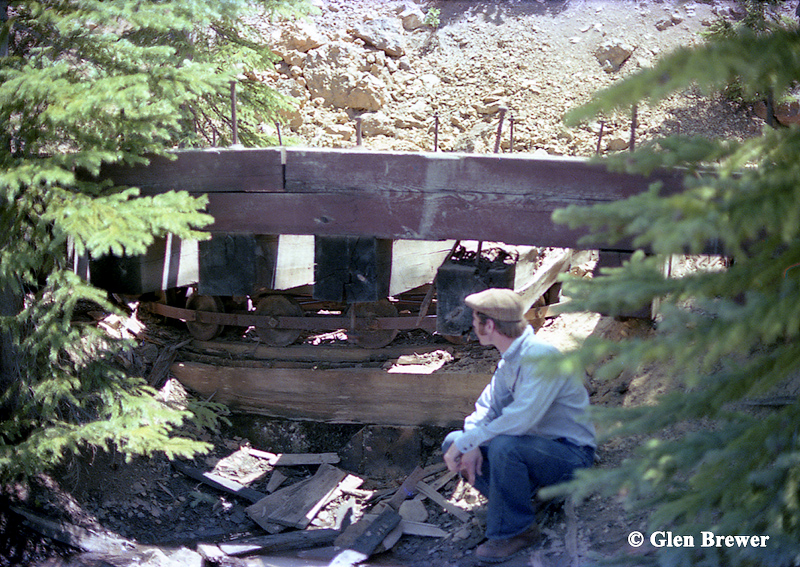
Studying the mechanism.